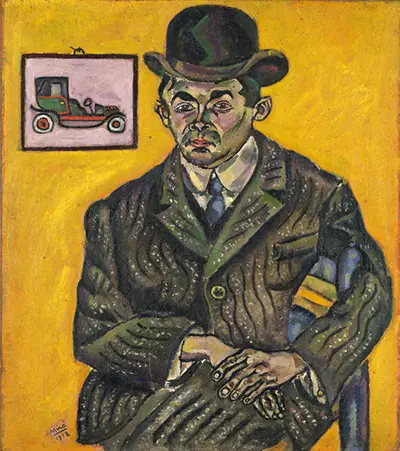 Buy Art Prints Now
Buy Art Prints Nowfrom Amazon
* As an Amazon Associate, and partner with Google Adsense and Ezoic, I earn from qualifying purchases.
Miro completed this portrait whilst in his mid-twenties and the style is immediately recognisable as being from this early period. He produced a large number of paintings within the approaches of impressionism, cubism and modernism before finding his signature abstract language.
The colour scheme found here is bold, without a doubt. One can immediately class this in the realms of fauvism for that reason, a movement where colours would sometimes clash, and brightness was set to a maximum. Miro's use of grey tones for the model's hat and clothing does allow a little more balance to be found here than some other examples to have come from the official fauvists, but the connection is still clearly there. This simple composition is lifted by the way in which Miro completes the overall piece, with a modernist look and the colour scheme we mentioned. Essentially, the content is simply a well-dressed gentleman sat on a wooden chair with a small painting of a car on the wall behind him. This could easily be too plain for some artists, but Miro's flair means this relative lack of visual interest is still enough for him to produce something highly memorable. The way in which he captures the tweed material is absolutely divine.
"...Even in my portraits, where I tried to capture the immobility of presence . I tried to get the vibration of the creative spirit into my work..."
When we think about modern portraiture, we normally consider the likes of Frida Kahlo, who gave us the likes of The Broken Column and The Two Fridas, or perhaps two stylish British artists, namely David Hockney (Mr and Mrs Clark and Percy) and also Stanley Spencer. Miro, not so much, but examples such as this depiction of Heriberto Casany illustrate that he was actually highly skilled within this genre, but merely prefered to move in another direction once he reached his thirties. Whilst the look of this work is innovative and modern, the very real construction where things are as they were in real-life, would perhaps have been to similar to traditional art for Miro's liking and later on he would purposely attempt to avoid any similarities between his own work and that from centuries earlier.




